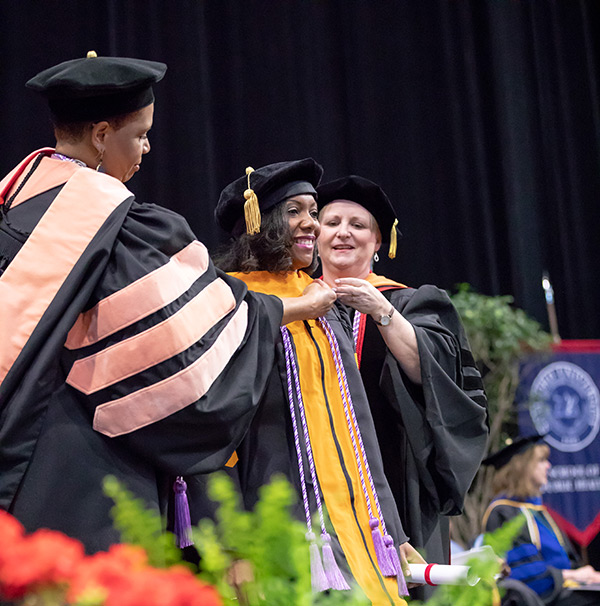
Samford University’s Ida Moffett School of Nursing has received more than $2.1 million to help make graduate nursing education more affordable for currently practicing or teaching nurses committed to careers in nursing education.
Samford’s $2,140,611 Nurse Faculty Loan Program (NFLP) grant from the U.S. Department of Health and Human Services, Health Resources and Services Administration is the largest in the country and one of only three nationally that exceeds $1 million. This is Samford’s 16th year to receive funding for the program.
According to Jane Martin, nursing school senior associate dean and project director of the grant, additional faculty are needed for nursing schools to increase student capacity. “The Nurse Faculty Loan Program is designed to help address the shortage of nurse educators. Students who receive loans for graduate degree programs can have up to 85 percent of the loan forgiven in exchange for service as full-time nursing faculty members at an accredited school of nursing,” she added.
“The need for professional registered nurses is growing at a rapid pace, and faculty shortages in nursing schools are impeding our ability to address the increased demand,” said Nena F. Sanders, vice provost of Samford’s College of Health Sciences and nursing school dean. “It is projected that our country will need an additional 439,300 nurses by 2024.”
The American Association of Colleges of Nursing found that nursing schools turned away 64,067 qualified applicants in 2016-17. Nearly two-thirds of the nursing schools responding to the survey pointed to a shortage of faculty and/or clinical preceptors as a reason for not accepting all qualified applicants into their programs. More than 92 percent of faculty vacancies were positions requiring or preferring a doctoral degree.
“Since 2008, the NFLP has provided grants to eligible Samford students pursuing a Doctor of Nursing Practice (D.N.P.). These graduates are now serving in a variety of academic settings throughout the nation,” said Gretchen McDaniel, associate dean for graduate nursing program. According to McDaniel, students in a number of Samford’s D.N.P. options may be eligible for funding, including Bachelor of Science in nursing to D.N.P. nursing administration or nursing informatics and analytics, and post-master’s administration or advanced practice.
The NFLP was approved by Congress in 2002, and Samford was one of the first 55 nursing schools from across the U.S. to receive funds. Samford's NFLP grants now total more than $13.5 million. The 2018-19 grant is expected to help more than 150 students from 18 states in Samford’s Doctor of Nursing Practice program.
To apply for admission to Samford graduate programs in nursing, go to www.samford.edu/nursing/graduate-nursing.
